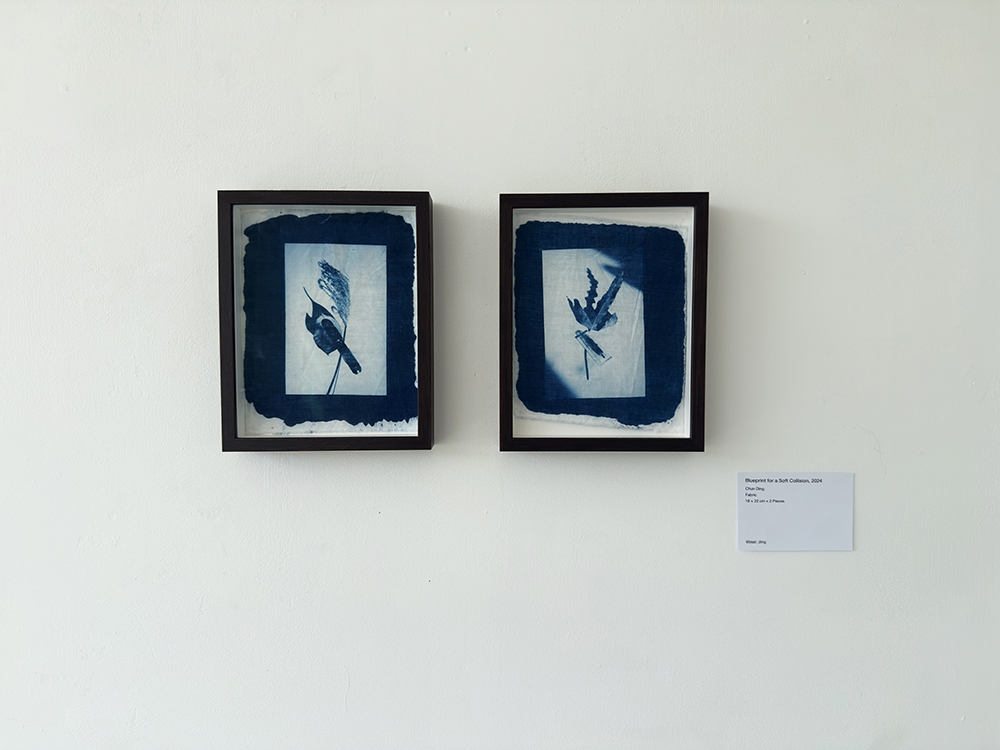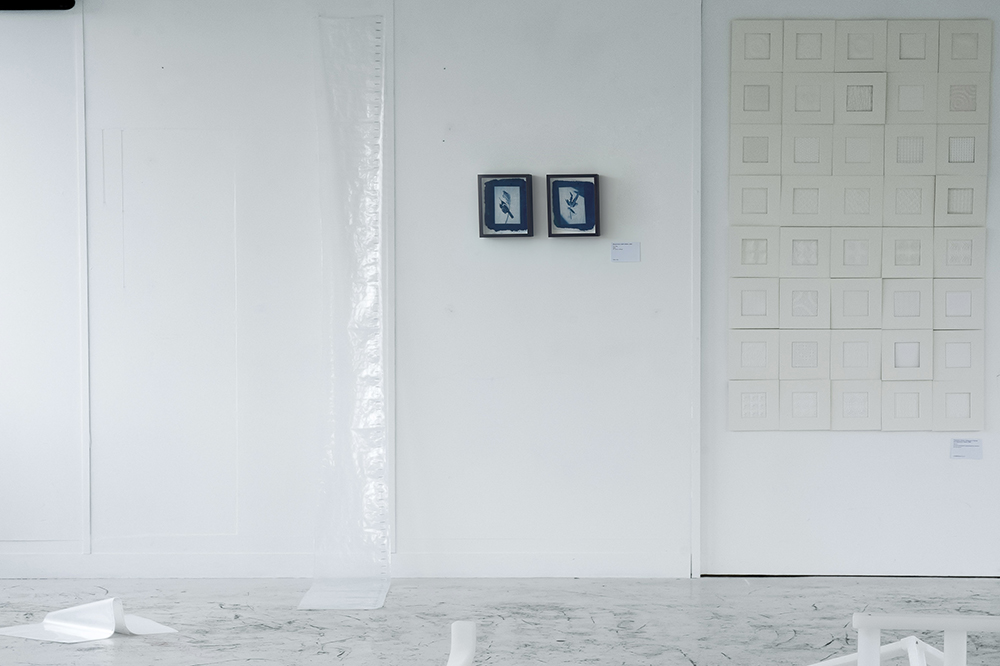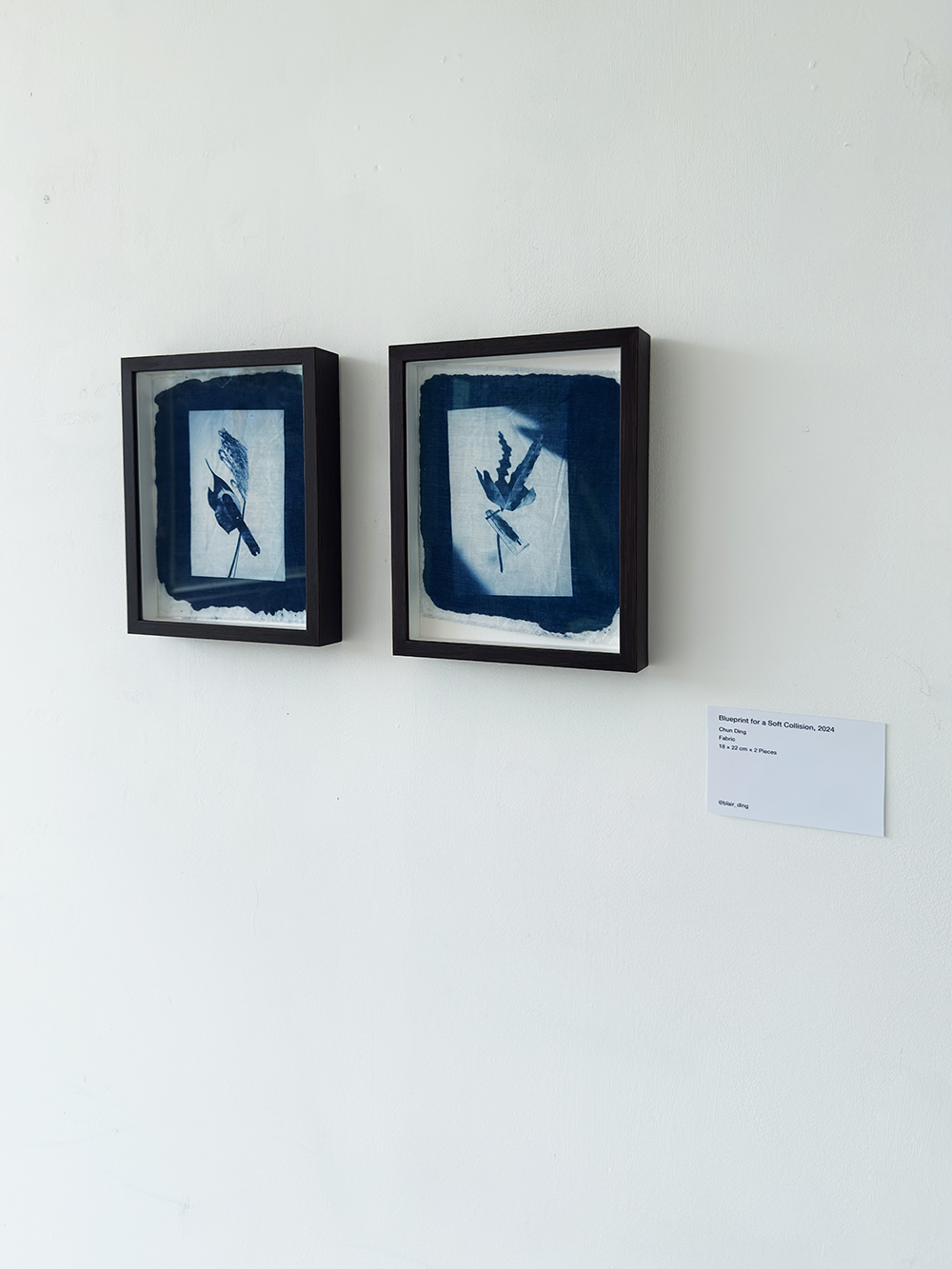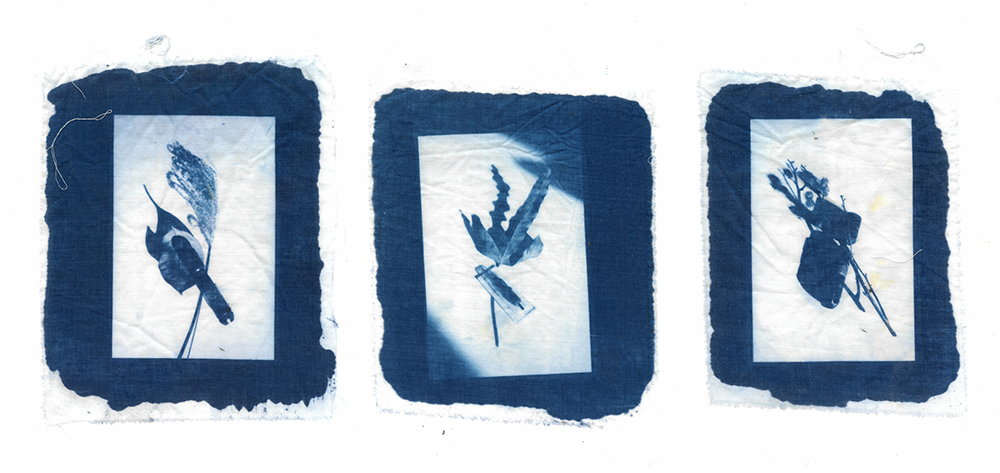When did you last hold a leaf up to the light? Really look at it – trace the delicate veins, feel its papery weight, notice how sunlight transforms it into something almost translucent? If you’re like most of us, trapped in concrete jungles and glass towers of cities, it’s probably been a while. We’ve built ourselves so far from nature that even our “green spaces” are carefully manicured performances of wildness, designed to fit our urban aesthetic rather than grow according to their instincts.
This is the world Chun Ding inhabits, and it’s the tension she explores in her triptych “Blueprint for a Soft Collision.” But rather than lamenting what we’ve lost, she finds poetry in the spaces where nature and technology brush against each other, creating unexpected moments.

Imagine you’re looking at what appears to be a botanical study, the kind Victorian naturalists might have made to catalogue distant flora. But something’s off. Items aren’t in isolation, and is that really a tattoo needle ghosting beneath a translucent leaf? Suddenly, you’re not looking at the documenting of nature but something far stranger – a conversation between the organic and the mechanical, played out in the language of light and shadow.
Ding uses cyanotype, a photographic process that’s nearly 200 years old, where chemicals react with sunlight to create distinctive blue images. There’s something beautifully circular about using the sun, the ultimate life force, to create art about our relationship with the natural world. It’s the same sun that scorches grass, bleaches our clothes, and makes us seek shade under trees. The same energy that powers photosynthesis now powers her art.
Instead of printing on smooth paper, she chooses fabric – a material that carries its own memory of being touched, folded, lived with. Every crease tells a story. Every thread holds history. When she prints her ethereal images onto textiles, she’s not just making art; she’s acknowledging that art lives in the same spaces we do, woven into the fabric of our daily existence.

The work isn’t imagining a return to a pastoral past but recognising that the natural and manmade worlds are now intertwined and we must find a way to live in harmony. In our current moment of climate anxiety, it would be easy to position technology as the villain and nature as the victim. Her “soft collision” suggests something gentler – not a violent crash but a meeting that transforms both participants. The tattoo needle isn’t attacking the leaf; it’s creating a new kind of hybrid world.
The work is small – just 18 by 12 centimetres – which means you can’t photograph it from across the room. You have to get close, really close, and spend time with it. In a world of endless scrolling and digital distraction, Ding is demanding something precious from us: our attention, our patience, our willingness to slow down and really look.

I would like to see the impact of her work if produced at a larger scale, and whether this could amplify the friction between the natural and mechanical worlds. Whether it makes the relationship disharmonious. Could the use of different elements from both worlds create composites that grab our attention more firmly? How would the concept behind her work transfer to other media, as it could form part of a larger project across different types of photography and potentially through film and text?
Ding’s work asks us to be archaeologists of the present moment. To dig beneath the surface of our tech-saturated lives and discover the ancient rhythms still pulsing there. Her soft collision reminds us that even in our most artificial environments, nature persists, adapts, and finds ways to speak. We just need to remember how to listen.
About the Author
Tabish Khan is an art critic specialising in London’s art scene and he believes passionately in making art accessible to everyone. He visits and writes about hundreds of exhibitions a year covering everything from the major blockbusters to the emerging art scene.
Tabish has been visual arts editor for Londonist since 2013. Contributions include reviews, previews, news, experiences and opinion pieces. He is also a regular contributor for FAD with a weekly top exhibitions to see, reviews and a column called ‘What’s wrong with art’. He also regularly reviews for Culture Whisper.
Tabish is a trustee of ArtCan, a non-profit arts organisation that supports artists through profile raising activities and exhibitions. He is also a trustee of the prestigious City & Guilds London Art School and Discerning Eye, which hosts an annual exhibition featuring hundreds of works.

